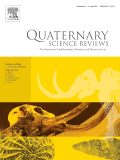
Quaternary Science Reviews
Scope & Guideline
Decoding the Complexities of Earth’s Recent History
Introduction
Aims and Scopes
- Paleoenvironmental Reconstruction:
The journal focuses on reconstructing past environments using various proxies such as sedimentary records, isotopic analyses, and paleoecological data. This includes studies on vegetation dynamics, climate changes, and human-environment interactions. - Glacial History and Dynamics:
Research on glacial processes, including advances and retreats of ice sheets, glacial geology, and the impacts of glacial dynamics on sea levels and sedimentation, is a core focus area. - Climate Change Impact:
The journal publishes works that explore the effects of past and present climate changes on ecosystems, biodiversity, and human societies, particularly during critical periods such as glacial-interglacial transitions. - Integrative Methodologies:
Quaternary Science Reviews emphasizes the use of integrated methodologies, combining various scientific approaches (e.g., geochemistry, geomorphology, archaeology) to enhance the understanding of Quaternary environments. - Regional Studies:
The journal includes diverse regional studies that provide insights into local and global patterns of environmental change, incorporating data from various geographic areas to highlight the complexity of climate and ecological responses.
Trending and Emerging
- Interdisciplinary Approaches to Climate Change:
Recent publications emphasize the integration of various scientific disciplines, including geology, ecology, and archaeology, to better understand the multifaceted impacts of climate change on ecosystems and human societies. - Focus on Anthropogenic Influences:
There is an increasing focus on how human activities have impacted environmental conditions during the Quaternary, with studies examining land-use changes, resource exploitation, and the role of humans in shaping landscapes. - High-Resolution Climate Proxies:
The use of high-resolution proxies, including isotopic analyses and sedimentary records, is trending, allowing for more precise reconstructions of past climate variations and their implications for current climate models. - Research on Extreme Weather Events:
An emerging theme is the investigation of past extreme weather events and their ecological impacts, which is particularly relevant in the context of increasing climate variability and its consequences for contemporary societies. - Application of Modern Technologies:
The incorporation of modern technologies, such as machine learning and remote sensing, into Quaternary research is gaining momentum, facilitating new insights and enhancing the analytical capabilities of traditional methodologies.
Declining or Waning
- Traditional Archaeological Studies:
There appears to be a decline in papers focusing solely on traditional archaeological methodologies without integrating environmental or climatic contexts. As interdisciplinary approaches gain traction, purely archaeological studies may be less frequently published. - Simplistic Models of Climate Change:
Research employing overly simplistic models to explain climate change impacts is becoming less common, as there is a growing demand for more complex, nuanced models that account for multiple interacting variables. - Generalized Paleoecological Narratives:
Papers providing broad, generalized narratives about paleoecological changes without robust data or specific case studies are appearing less frequently, reflecting a trend towards more detailed, data-driven research. - Focus on Localized Events:
The publication of studies concentrating solely on localized climatic or environmental events, without broader regional or global implications, seems to be decreasing in favor of research that connects local findings to larger trends. - Overemphasis on Single-Proxy Analyses:
There is a noticeable decline in studies relying on single-proxy analyses for environmental reconstructions, as researchers increasingly recognize the value of multi-proxy approaches to provide more comprehensive insights.
Similar Journals

GEO-MARINE LETTERS
Pioneering Research in Planetary and Oceanic StudiesGEO-MARINE LETTERS, published by Springer, is a prestigious academic journal that has been a pivotal platform for the dissemination of innovative research in the fields of Earth and Planetary Sciences, Oceanography, Environmental Science, and Geotechnical Engineering since its inception in 1981. With an E-ISSN of 1432-1157, this journal has established itself in the Q2 quartile across multiple categories in 2023, indicating its influential position within the scientific community, as reflected by its Scopus rankings. While it currently does not offer an open access option, its rigorous peer-review process ensures the publication of high-quality research that contributes significantly to advancing our understanding of marine and geological sciences. Researchers, professionals, and students alike will benefit from the diverse scope of studies featured in GEO-MARINE LETTERS, making it an essential resource for those engaged in environmental and marine research. Situated in Germany, the journal's commitment to excellence continues to shape critical discussions and innovations in the field.

HOLOCENE
Charting the Course of Human-Environment Dynamics.HOLOCENE is a leading academic journal published by SAGE Publications Ltd that serves as an essential platform for researchers and scholars in the fields of archaeology, earth-surface processes, ecology, and paleontology. With an impressive Q1 ranking in prominent categories like Archaeology, Earth-Surface Processes, and Paleontology, this journal is dedicated to disseminating high-quality research that examines the dynamic interactions between humans and their environment throughout the Holocene epoch. Released biannually, it covers innovative studies and comprehensive review articles that contribute to our understanding of environmental changes and their implications across various disciplines. Although it does not offer open access, HOLOCENE maintains a robust reputation with an influential impact on the academic community, making it a vital resource for professionals, researchers, and students who aim to expand their knowledge and explore current developments in Earth and environmental sciences. With a commitment to excellence, HOLOCENE continues to shape the discourse in its field from its headquarters in the United Kingdom.

E&G Quaternary Science Journal
Pioneering Research in Archaeology and GeologyE&G Quaternary Science Journal, published by COPERNICUS GESELLSCHAFT MBH in Germany, stands as a prominent open-access platform dedicated to disseminating high-quality research in the fields of archaeology, geology, paleontology, and stratigraphy since its inception in 1979. With its ISSN 0424-7116 and E-ISSN 2199-9090, the journal has achieved remarkable recognition, indicated by its Q1 quartile ranking in archaeology across both arts and humanities sections, and its strong placements within the social sciences and Earth sciences categories. The journal provides crucial insights into the Quaternary period, contributing to our understanding of climate change, human evolution, and geological processes, making it invaluable for researchers, professionals, and students engaged in these collaborating disciplines. As an open-access journal since 2008, it ensures that cutting-edge research is readily available to a global audience, promoting knowledge exchange and facilitating advancements within the scientific community. The continuous commitment to excellence and its strategic focus on high-impact research positions E&G Quaternary Science Journal as a cornerstone publication in quaternary science.

GEOGRAFISKA ANNALER SERIES A-PHYSICAL GEOGRAPHY
Advancing Knowledge in Physical GeographyGeografiska Annaler Series A-Physical Geography, published by Taylor & Francis Ltd, is a leading academic journal dedicated to the advancing field of physical geography. With a rich publication history spanning from 1979 to 2024, this journal stands out in its categories, being positioned in the Q2 quartile for both Geography, Planning and Development and Geology in 2023. The journal is recognized for its contribution to Earth and Planetary Sciences, evidenced by its Scopus rankings placing it in the top 31% and 32% of its respective disciplines. Belonging to a distinguished publisher from the United Kingdom, it provides a vital platform for researchers, professionals, and students to disseminate and engage with cutting-edge research. While the journal does not currently offer open access, it remains a pivotal resource for those involved in the study of physical geography, offering insights that enhance our understanding of the Earth's processes and environments.
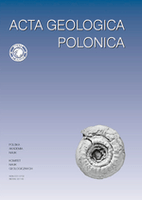
ACTA GEOLOGICA POLONICA
Transforming geological discussions into impactful knowledge.ACTA GEOLOGICA POLONICA is a distinguished journal published by the Polska Akademia Nauk, in collaboration with the University of Warsaw's Geology Department. Since its inception, it has served as a vital platform for disseminating innovative research in the field of Geology, reflecting a commitment to advancing scientific knowledge in Earth and planetary sciences. With an ISSN of 0001-5709 and an E-ISSN of 2300-1887, this journal provides a rigorous review process and is classified in the Q3 quartile for Geology as of 2023, indicating its growing influence in the discipline. Despite not being open access, the journal facilitates meaningful contributions that span a range of geological topics from fundamental research to applied sciences, thereby enriching the academic landscape. Researchers, professionals, and students alike are encouraged to engage with the valuable findings and discussions contained within its pages, which continue to shape the future of geological inquiry.
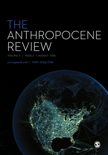
Anthropocene Review
Exploring the Impact of Humanity on Our PlanetAnthropocene Review is a prominent academic journal published by SAGE Publications Inc. that focuses on the interdisciplinary study of the Anthropocene—a term used to describe the significant global changes resulting from human activity. Launched in 2014 and forming part of its converged years until 2024, this journal has quickly established itself as an essential resource for researchers and professionals in the fields of Ecology, Geology, and Global and Planetary Change, as evidenced by its notable Q2 and Q3 rankings in these categories. With a solid Scopus ranking placing it within the top tiers of Earth and Planetary Sciences and Environmental Science disciplines, the Anthropocene Review aims to shed light on the complex interactions between human actions and the environment, fostering a deeper understanding of sustainability and ecological impacts. While currently not an open-access journal, it provides crucial research findings and theoretical advancements that appeal to students and academics alike, shaping the discourse on our planet's future.
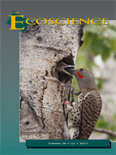
ECOSCIENCE
Driving innovation in ecological research and conservation.ECOSCIENCE, published by Taylor & Francis Inc, stands as a prominent journal in the fields of Ecology and Environmental Science, recognized for its commitment to advancing knowledge since its inception in 1994. With an ISSN of 1195-6860 and an E-ISSN of 2376-7626, the journal caters to a diverse audience of researchers, professionals, and students passionate about ecological and environmental issues. In 2023, it achieved Q2 and Q3 rankings in the Scopus category of Ecology and Evolution, Behavior and Systematics, reflecting its significance within the academic community. Moreover, ECOSCIENCE occupies notable positions in Scopus rankings, including Rank #324 in Agricultural and Biological Sciences and Rank #210 in Environmental Science, symbolizing its role as a catalyst for disseminating high-quality research. Although currently not open access, the journal's multifaceted scope encourages in-depth discussions on ecological diversity, conservation strategies, and sustainable practices, making it an invaluable resource for those engaged in ecological research and practice.

Cuaternario y Geomorfologia
Fostering Knowledge in Quaternary ResearchCuaternario y Geomorfologia is a distinguished journal published by the Spanish Quaternary Research Association, focusing on the interdisciplinary study of Quaternary research, geomorphology, and related fields. With its ISSN 0214-1744 and a publication history spanning from 2012 to 2024, the journal serves as a critical platform for researchers and practitioners in geography, geology, and paleontology. Although its current Scopus rankings place it in the lower quartiles across various categories, being Q4 in Earth-Surface Processes, Geography, Planning and Development, Geology, and Paleontology, Cuaternario y Geomorfologia continues to push boundaries within its sphere, aiming to foster a deeper understanding of Earth sciences. Situated in Madrid, Spain, the journal's commitment to sharing groundbreaking research without access barriers enhances its value for academics, offering insights that drive forward the fields of Quaternary studies and beyond. Researchers, professionals, and students alike will find a rich repository of knowledge within its pages, making it an essential resource for current and aspiring experts in the discipline.

Depositional Record
Elevating interdisciplinary dialogue in sedimentology and beyond.Depositional Record, published by WILEY, stands as a vital resource for researchers and professionals in the fields of Geology, Paleontology, Oceanography, and Environmental Science. Since its inception in 2015, this Open Access journal has been dedicated to advancing the understanding of sedimentary processes, depositional environments, and their implications on Earth's history and contemporary climate dynamics. With an impressive array of categorizations, including Q1 rankings in Geology, Paleontology, and Stratigraphy, it underscores its significant contribution to these scientific arenas. The journal’s reach is reflected in its Scopus rankings, placing it within the top quartiles in multiple categories, indicating the high quality and impact of its published research. Researchers, students, and professionals who engage with Depositional Record will find a treasure trove of knowledge aimed at informing best practices, innovative studies, and fostering an interdisciplinary dialogue crucial for environmental stewardship and geological exploration.
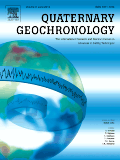
Quaternary Geochronology
Charting the Timeline of Our Planet's Recent Past.Quaternary Geochronology is a leading journal published by Elsevier Ltd, specializing in the field of Earth and Planetary Sciences. With a strong emphasis on the geochronological methods and techniques used to date geological materials from the Quaternary period, this prestigious journal serves as a critical platform for disseminating significant research findings, theoretical advancements, and comprehensive reviews relevant to the stratigraphic and geological sciences. Since its inception in 2006, the journal has garnered an impressive impact factor, positioning itself in the Q1 category for its excellence in Earth and Planetary Sciences, Geology, and Stratigraphy. Quaternary Geochronology currently ranks #11 out of 55 in Stratigraphy, #74 out of 321 in Geology, and maintains a high standing across various related fields. Researchers, professionals, and students are encouraged to explore its rich archives and current issues for the latest trends, methodologies, and findings that shape our understanding of Quaternary environments. The journal does not operate under an open-access model, ensuring that high-quality peer-reviewed research is accessible while maintaining rigorous academic standards.